Sometimes individual trees attain what might be called celebrity status. They become widely known for some particular quality or association. This often relates to historical figures and events that have involved the tree. The Fortingall Yew in Highland Perthshire is supposed to have shaded the young Pontius Pilate, the Roman governor of Judaea who presided over the trial of Jesus. While this is probably fanciful, the great age to which yew trees grow does make this story at least possible.
Other trees, like the ancient wych elm (Ulmus glabra) known as the Last Ent of Affric, are simply remarkable survivors. They provide us with a sense of wonder that is bound up with their great age and character. We can’t help but imagine the changes they have witnessed and the storms they have weathered. Their resilience gives us reassurance. The Last Ent grows alone in the dramatic scenery of Glen Affric in the Scottish Highlands and was voted Scotland’s Tree of the Year in 2019.
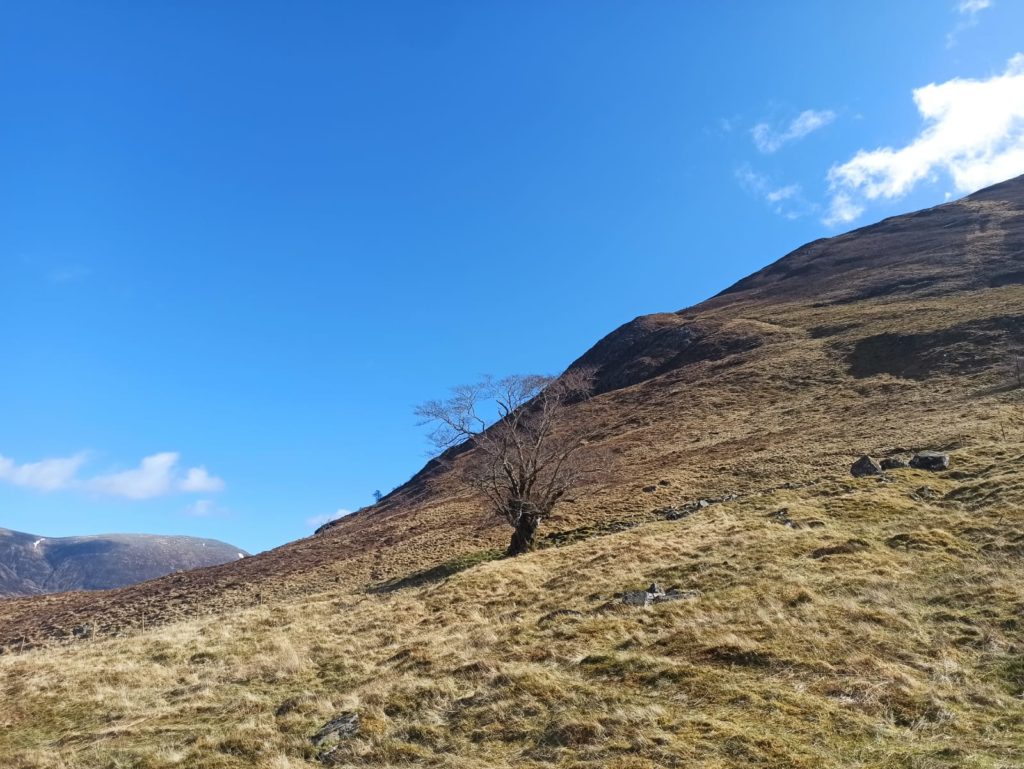
Last week a new chapter in the story of the Last Ent began with the planting of a new generation of wych elm seedlings by the Scottish Plant Recovery project. The project has teamed up with Forestry and Land Scotland, the owners of the land where the Last Ent grows, to initiate a recovery of this native mountain tree. Thirty-five one-year-old saplings have been planted near the ancient elm and further rounds of planting over the next two years aim to increase the new population to about 200 trees in the glen.

The seedlings have been bred from large wych elms in the Scottish Borders that have survived a devastating fungal disease, known as Dutch elm disease, suggesting that they have some unexplained natural resilience. Wych elm is not normally thought of as a threatened species. However, the losses to disease have been so severe that survivors are left extremely thinly spread in the landscape and unlikely to interbreed without assistance. It is the genetic make up of these survivors that holds the key to the future recovery of wych elm.
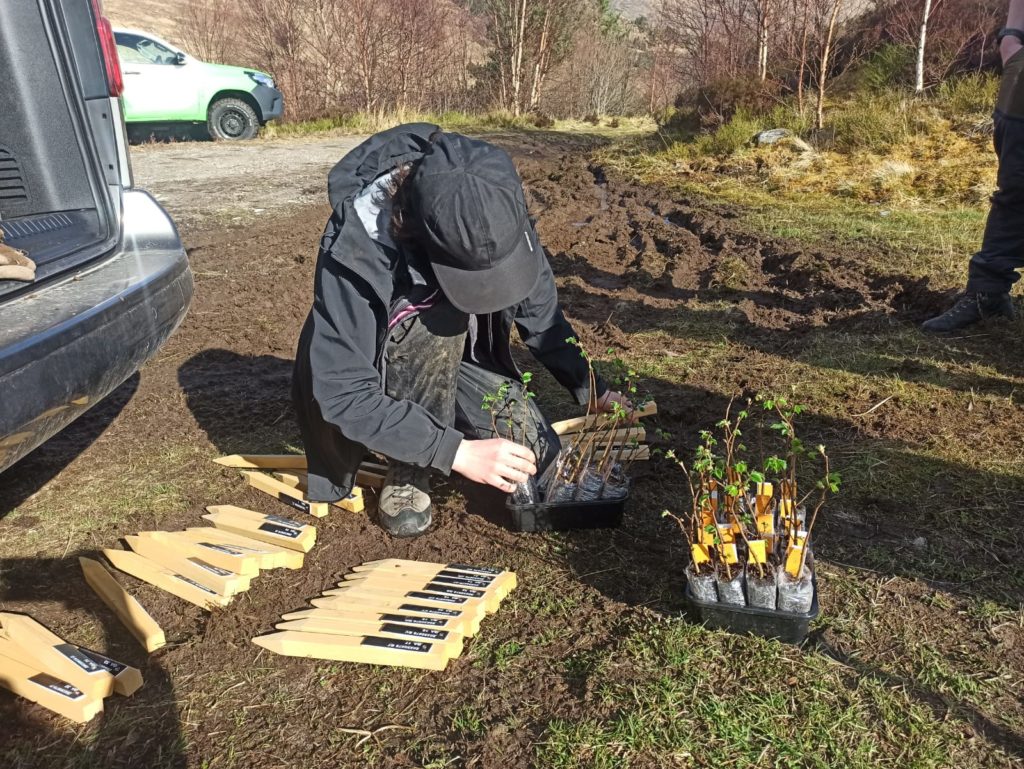
A debate in nature conservation circles is whether ‘to plant or not to plant’ in projects that aim to restore nature. Tree planting has become seen as a bit of a quick fix and planting the wrong trees in the wrong places is all too common. At worst tree planting is an exercise in greenwashing – giving the impression of environmentally responsible actions when the result may be neutral or even negative for nature. So, it is not surprising that some conservationists take a dim view of tree planting and consider it to be little more than landscape gardening.
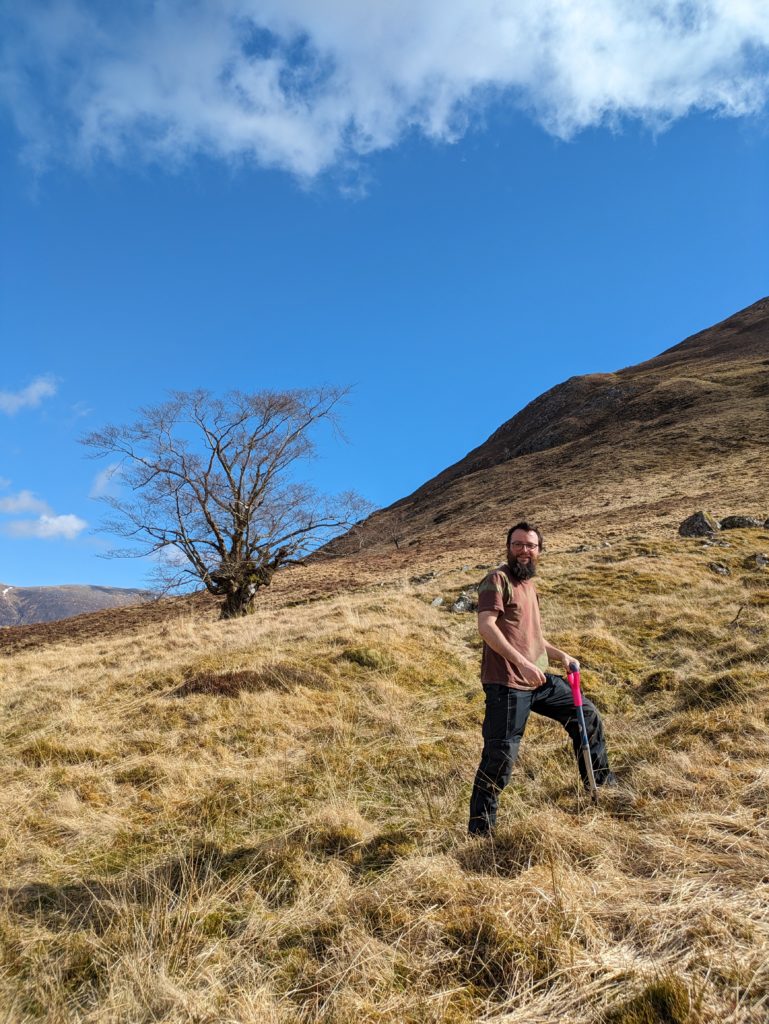
The planting around the Last Ent is an example of a responsible, scientifically-led intervention aimed at initiating the natural regeneration of upland woodland. The fact that wych elm is a natural component of the upland broadleaved woodlands that once occupied parts of Glen Affric is demonstrated by the presence of the ancient elm. Planting for nature restoration should be regarded as a last resort, but the Last Ent has definitely reached the last chance saloon. Wych elm is a self-incompatible tree, meaning it does not usually pollinate itself. As a result, isolated trees produce very little viable seed. Left to its own devices, even if deer densities are brought down to allow seedlings a chance to get away unchecked, the lone tree is unlikely to produce a new generation of elms.
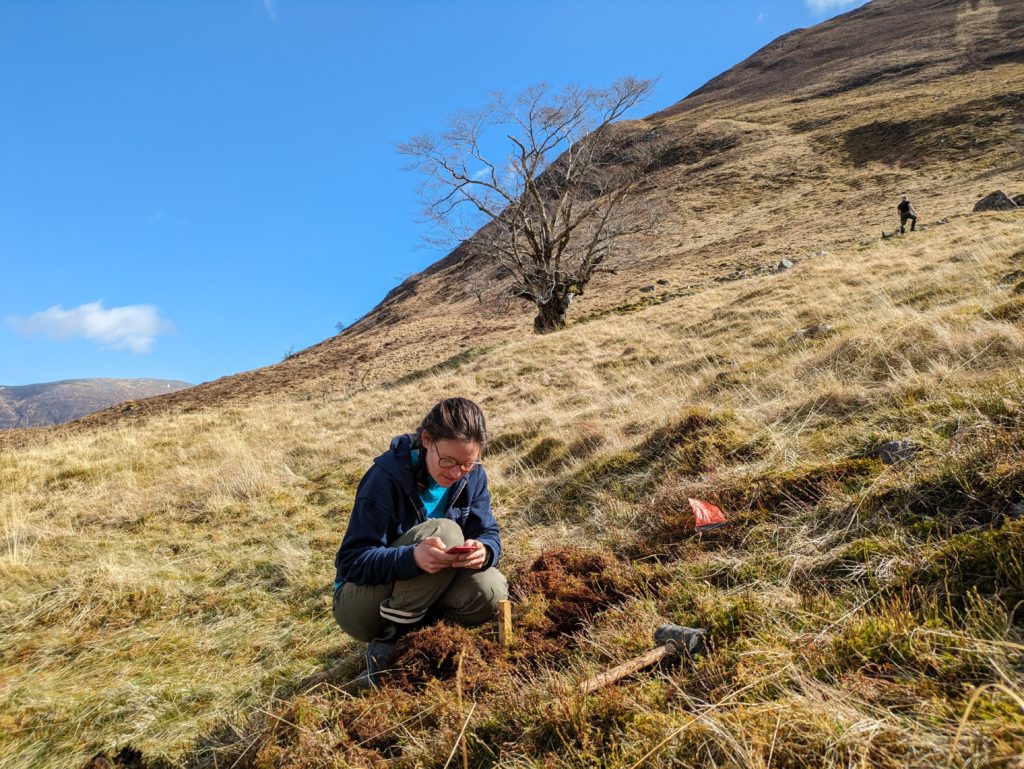
By planting modest numbers of wych elms, that may have inherited resilience to disease from both parents, we have set up the conditions for further breeding and natural regeneration to happen. Elms begin producing seed around the age of 20, so the natural phase of recovery is not that far off in the future.
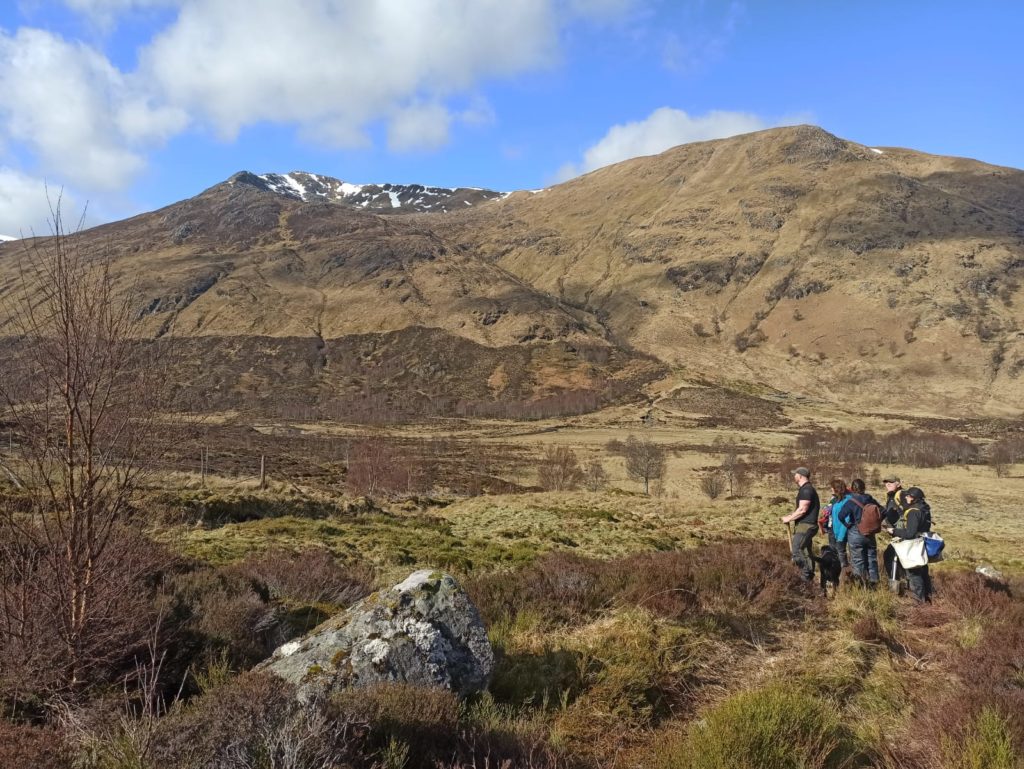
This approach, using limited and targeted planting to initiate natural processes, has been rather overlooked as people have sought to align themselves with either the interventionist or the non-interventionists camps. This is a pity as there are circumstances, particularly involving recovery of threatened species, where a combined approach may be best.
What we are setting up is a series of long-running experiments and it will be fascinating to see how things play out. The trick is putting plants into habitats that come as close as possible to their ideal conditions. This will increase the chances of natural regeneration happening.
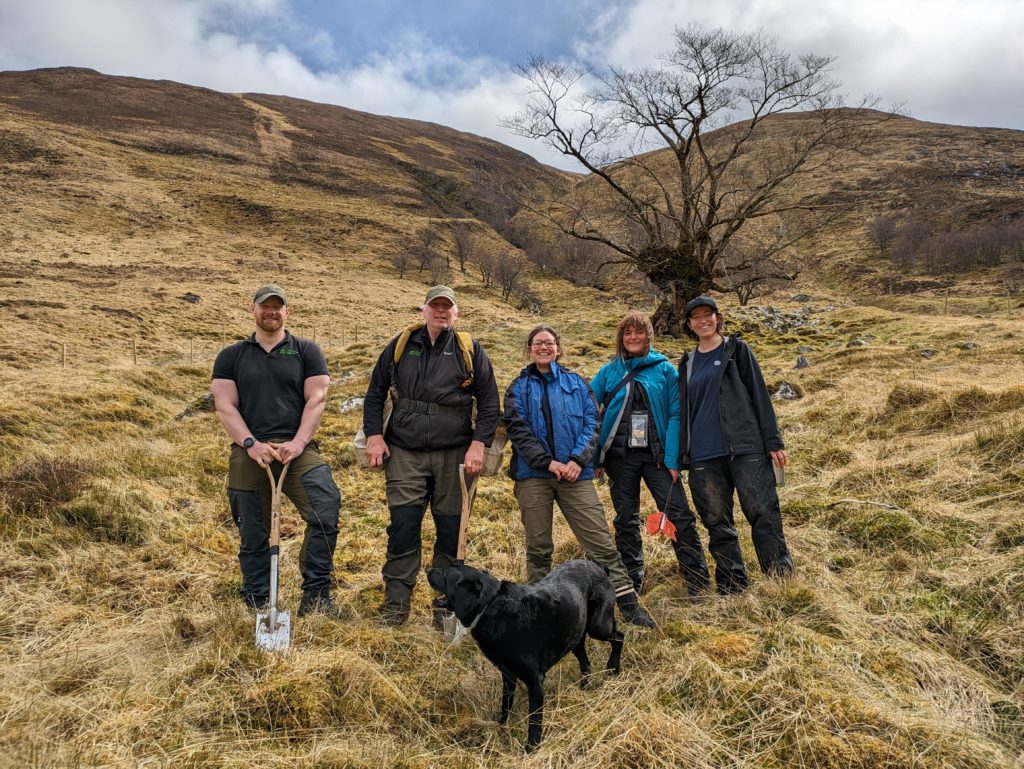
The Last Ent will hopefully contribute to the gene pool of the next generation of elms that follow on from the planted trees. As elms are both wind pollinated and their seeds are wind-dispersed the genetic legacy of the Last Ent could spread far and wide to suitable habitat patches in Glen Affric.


- X @TheBotanics
- X @nature_scot
- X and Facebook @ScotGovNetZero
- Facebook @NatureScot
- #NatureRestorationFund
